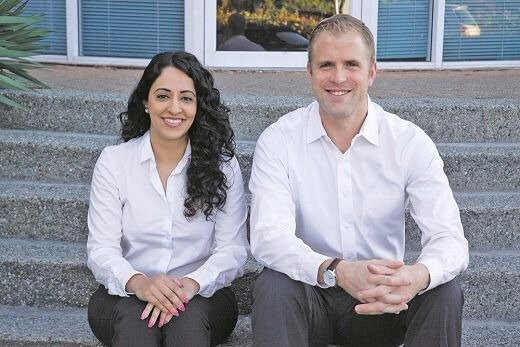There Are Different Types of Dental Bridges
Many may not know this, but there are different types of dental bridges.
Dental bridges can be placed on natural teeth, as well as on implants. Most bridges are created by reducing tooth structure on the teeth on either side of a missing tooth.
Crowns are then fused together and are placed over the two reduced teeth, with a false crown replacing the missing tooth. Crowns on front teeth can be performed with little to no tooth reduction. Generally, bridges are placed for those patients who do not want an implant.
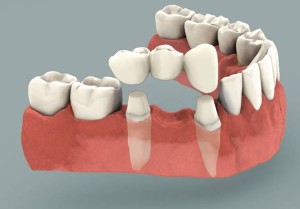
Basic Bridge: Dr. Seddon and Dr. Dhillon will give anaesthetic to freeze the teeth and gums. They will then prepare the teeth on either side of the space for the false tooth to accommodate for the thickness of the bridge. When these teeth already have fillings, part of the filling may be left in place to help as a foundation for the crown. New fillings may also be added to make the supporting teeth even stronger. An impression is taken, which will serve as the model from which the bridge, false tooth, and crowns will be made by a dental laboratory. A temporary bridge will be placed for you to wear while your bridge is being made, usually for 2 weeks. This temporary bridge will serve to protect your teeth and gums.
At your second appointment, the temporary bridge will be removed. Your new permanent bridge will be fitted and checked and adjusted to fit your mouth. Your new bridge will then be bonded to your teeth.
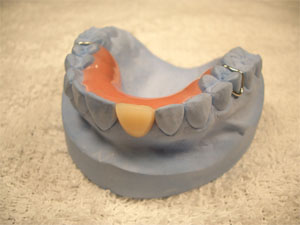
Flipper Appliance: A Flipper is a false tooth that temporarily takes the place of a missing tooth. This device can be attached by either a wire or a plastic piece that fits in the roof of your mouth. Flippers are meant to be a temporary solution while awaiting the permanent bridge or implant. They are generally placed on front teeth.
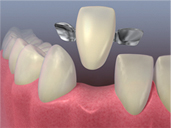
Maryland Bridge: This bridge is designed for front teeth. Rather than trim the neighbouring teeth, this treatment allows for patients to have a false tooth, with attachment wings, bonded to the inside of healthy support teeth. This treatment is seen as a ‘long-term temporary’ bridge, meaning it can last a long while, but should ideally be replaced with an implant or permanent bridge.
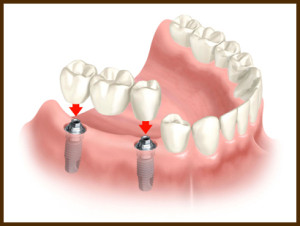
Implant Bridge: Much like basic bridges, these fused crowns are supported by two implants, rather than natural teeth. This treatment is great for those who have three or more missing teeth, side by side. Once implants are placed and tissues have healed, an impression is taken. Two weeks later the permanent bridge can be bonded into the mouth. With implant bridges on the back teeth, temporary bridges are not generally created, as there will be no sensitivity.

